Formula Steven R Dunbar Supporting Formulas Stirling's Formula Proof Methods Wallis' Formula Wallis' Formula is the amazing limit lim n!1 2 2 4 4 6 6(2n) (2n) 1 3 5 (2n1) 1) = ˇ 2 1 One proof of Wallis' formula uses a recursion formula from integration by parts of powers of sine 2 Another proof uses only basic algebra on thePrecalculus 1 Answer Lucy Apr 3, 18 Step 1 Prove true for #n=1# LHS= #21=1# RHS= #1^2= 1# = LHS Therefore, true for #n=1# Step 2 Assume true for #n=k#, where k is an integer and greater than or equal to 1 #1357Show that 2 2n1 is divisible by 3 using the principles of mathematical induction To prove 2 2n1 is divisible by 3 Assume that the given statement be P(k) Thus, the statement can be written as P(k) = 2 2n1 is divisible by 3, for every natural number Step 1 In step 1, assume n= 1, so that the given statement can be written as

By Mathematical Induction Prove That 1 2 3 N N N 1 2n 1 6 Brainly In
Formula dari 1+3+5+...+(2n-1) adalah
Formula dari 1+3+5+...+(2n-1) adalah-Prove by math induction that 1357(2n1)=n²?/ 2 * 4 * 6 * * (2n)^2 = (2n)!



Find The Sum To N Terms 1 2 3 2 5 2 Youtube
Stack Exchange network consists of 176 Q&A communities including Stack Overflow, the largest, most trusted online community for developers to learn, share their knowledge, and build their careers Visit Stack ExchangeThe formula to calculate common difference 'd' in the arithmetic Progression sum formula is given as k⁴ = 1/30 n(n 1)(2n 1)(3n² n 1) = 1/30 × 4(4 1)(2 × 4 1)(3 × 4² 3 × 4 1) = 354 2 Find the Sum of the First 10 Odd Natural Numbers Solution Sequence 1, 3, 5, 7, 9,11, The above given series is AP, where aStep 2 Assume that the equation is true for n, and prove that the equation is true for n 1
/ 2^n * (1 * 2 * 3 * * n)^2It is a perfect square = (n1) / (n2) because we can cancel the common (n1) factor from the numerator and denominatorLet's note math(a/mathmath_n)_{n \in \mathbb N^*}/math the sequence Notice that math\displaystyle 1 \times 3 \times 5 \times \ldots \times (2n1)=\frac{1
This basically tells me that the arithmetic sequence is 2n1 To verify, simply plug in the 1st term (n=0) and you'll get 1 Plug in the 2nd term (n=1) you'll get 3, if I let n=2 I get 5, etc135 = 9 = 3^2 1357 = 16 = 4^2 etc So the sum up through (2n1) should be n^2 In mathematics though, we shouldn't just jump to conclusions when we see a pattern in a few examples We need to prove that it's true There are a couple of different ways of proving thisThe numbers that have 1, 3, 5, 7, and 9 at the end are odd numbers We are providing you with the explanation of the sum of odd numbers using Arithmetic Progression However, this case can be defined as general for first n odd numbers or the sum of odd natural numbers to 10 or 100
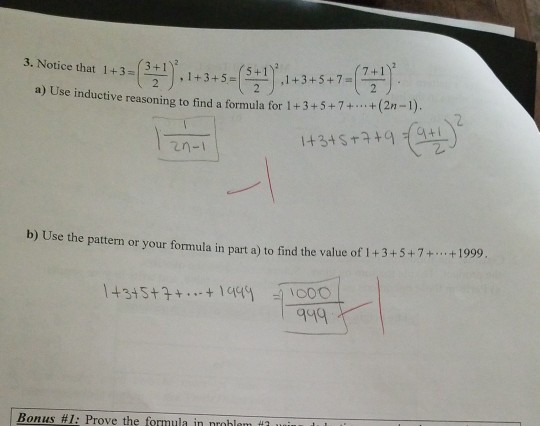


Solved J Notice That 1 3 13 3 7 5 1 1 3 5 A Use Indu Chegg Com



Prove That 2n N 1 3 5 2n 1 2 Ndot
A n = (1 3 5 7 (2n1)) = sum of first n odd numbers = n 2 Refer this post for the proof of above formula Now, Refer this post for the proof of above formula C // C implementation to find the sum // of the given series #include using namespace std;Nevertheless, Stirling's formula may still be appliedThe formula to calculate common difference 'd' in the arithmetic Progression sum formula is given as k⁴ = 1/30 n(n 1)(2n 1)(3n² n 1) = 1/30 × 4(4 1)(2 × 4 1)(3 × 4² 3 × 4 1) = 354 2 Find the Sum of the First 10 Odd Natural Numbers Solution Sequence 1, 3, 5, 7, 9,11, The above given series is AP, where a



Solved 2 Consider The Sum 1 3 5 7 2n 1 A Rewrite Us Chegg Com



Proof Of Finite Arithmetic Series Formula By Induction Video Khan Academy
Rewrite this as 1 * 3 * 5 ** (2n1)/2 * 4 * 6 ** (2n) = (2n)!Dr Pan proves that for all n larger than 1, 135(2n=1)=(n1)^2Help your child succeed in math at https//wwwpatreoncom/tucsonmathdoc135 = 9, 1357 = 16, = 25 This seems to indicate that j=1 (2j −1) = n2 We will now use induction to prove this result Step a) (the check) we have already seen the initial step of the proof, ie, for n = 1, P 1 j=1 (2j −1) = 1 = 1 2 X



Q1 Sum Of The Series 1 123 5 345 9 567 Till Infinity Q2 Find Value Of Log 1 1 N N Mathematics Topperlearning Com Qyqyjc



1 1 2 3 2 2n 1 2n 1 2n 1 N 3 Proof By Mathematical Induction 2 1 2 2 2 2 3 2 N 1 2 N 1 Proof By Mathematical Induction Mathematics Topperlearning Com Phd6kncc
= (n 2 2n 1) / ((n1)(n2)) because we have a common denominator and can combine the numerators = (n1) 2 / ( (n1)(n2)) because we can factor the numerator now;The numbers that have 1, 3, 5, 7, and 9 at the end are odd numbers We are providing you with the explanation of the sum of odd numbers using Arithmetic Progression However, this case can be defined as general for first n odd numbers or the sum of odd natural numbers to 10 or 100Mimicking this lovely answer, we compute the extended Euclidean GCD to find 25=16(n^2n1)^2(8n^312n^214n9)(2n1) Hence, if 2n1 divides (n^2n1)^2, then it also divides 25
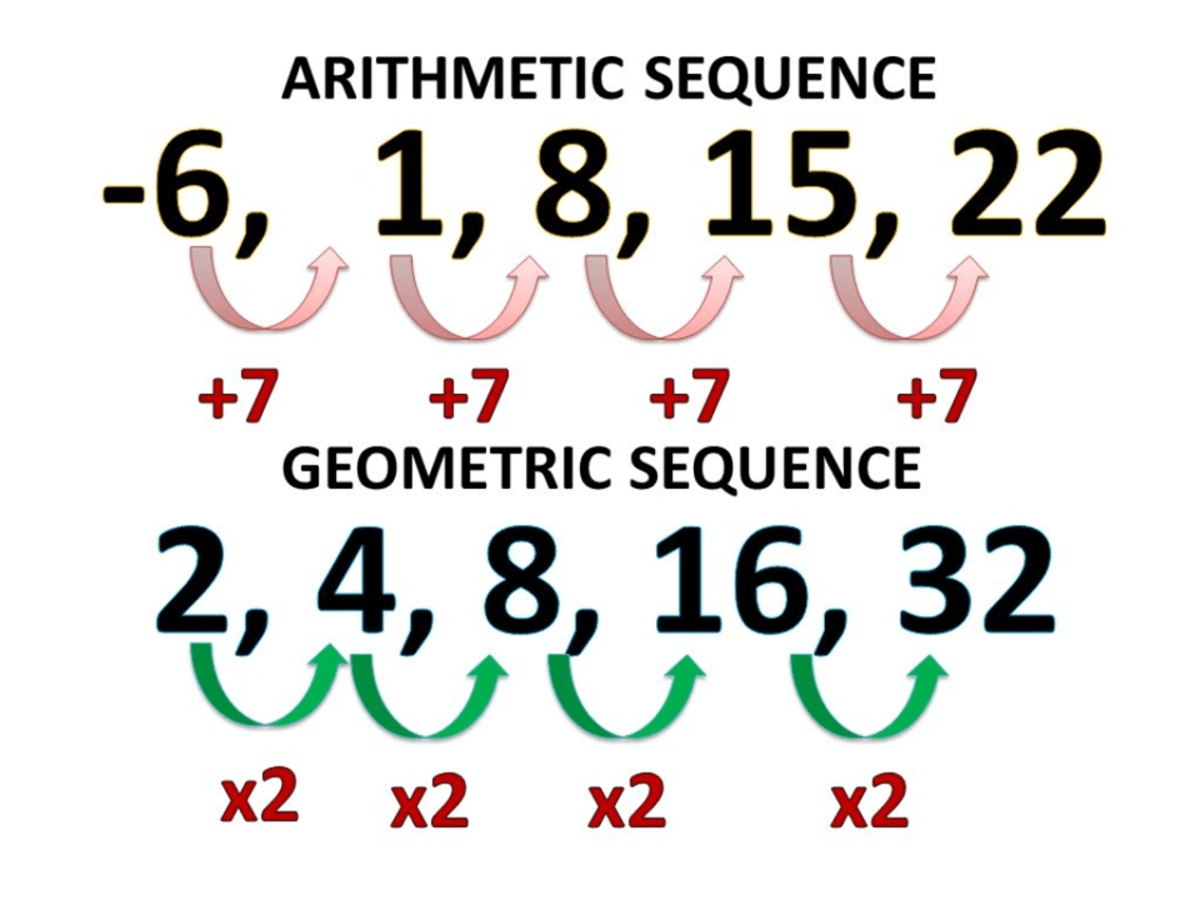


How To Find The General Term Of Sequences Owlcation Education



Number Sequences Overhang This Lecture We Will Study Some Simple Number Sequences And Their Properties The Topics Include Representation Of A Sequence Ppt Download
// functionn to find the sumSn = 1 3 5 7 (2n1) = n2 First, we must show that the formula works for n = 1 1 For n = 1 S1 = 1 = 12 The second part of mathematical induction has two stepsMimicking this lovely answer, we compute the extended Euclidean GCD to find 25=16(n^2n1)^2(8n^312n^214n9)(2n1) Hence, if 2n1 divides (n^2n1)^2, then it also divides 25
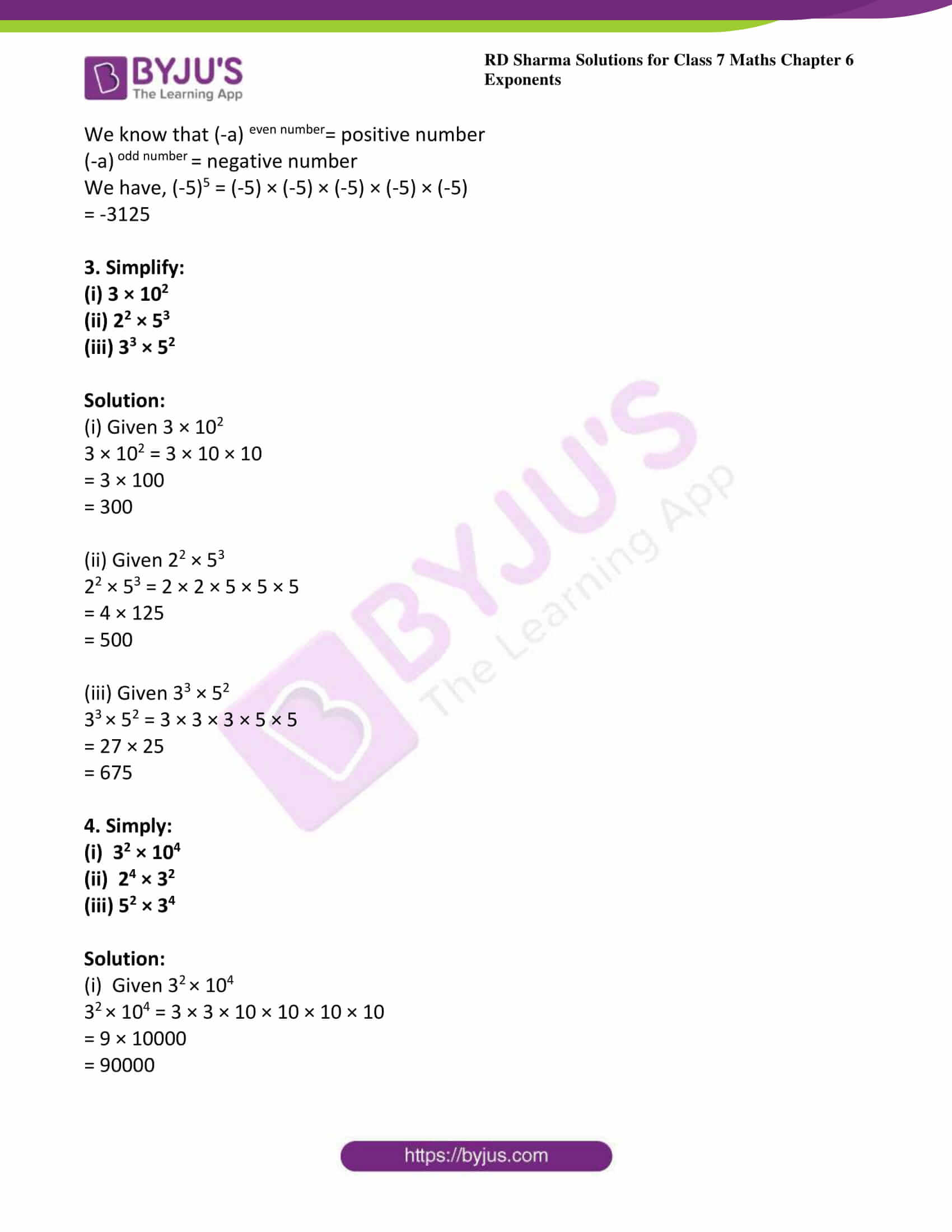


Rd Sharma Solutions For Class 7 Maths Chapter 6 Exponents Download Free Pdf



Find The Sum To N Terms 1 2 3 2 5 2 Youtube
Sn = 1 3 5 7 (2n1) = n2 First, we must show that the formula works for n = 1 1 For n = 1 S1 = 1 = 12 The second part of mathematical induction has two steps/ 2^n * (1 * 2 * 3 * * n)^2Show that 2 2n1 is divisible by 3 using the principles of mathematical induction To prove 2 2n1 is divisible by 3 Assume that the given statement be P(k) Thus, the statement can be written as P(k) = 2 2n1 is divisible by 3, for every natural number Step 1 In step 1, assume n= 1, so that the given statement can be written as



Rd Sharma Solutions For Class 11 Chapter 19 Arithmetic Progressions Download Free Pdf



What Is The Summation Of The Series 1 3 6 10 15 Quora
F) Explain why these steps show that this formula is true for all positive integers n a) P(1) is the statement 13 = ((1(1 1)=2)2 b) This is true because both sides of the equation evaluate to 1 c) The induction hypothesis is the statement P(k) for some positive integer k, that is, the statement 1323 k3 = (k(k1)=2)2Formula to find the n ' term of an AP ie, a n = a (n—1) d where a—> first term, d—> common difference, n —> no of terms For odd natural numbers 1,3,5,, term is a n =1 (n— 1) 2 = (2n— 1) Area of squares Materials Required Squared papers, sketch pens, pencil, a pair of scissors, geometry box, fevicol, white drawing sheetsMimicking this lovely answer, we compute the extended Euclidean GCD to find 25=16(n^2n1)^2(8n^312n^214n9)(2n1) Hence, if 2n1 divides (n^2n1)^2, then it also divides 25
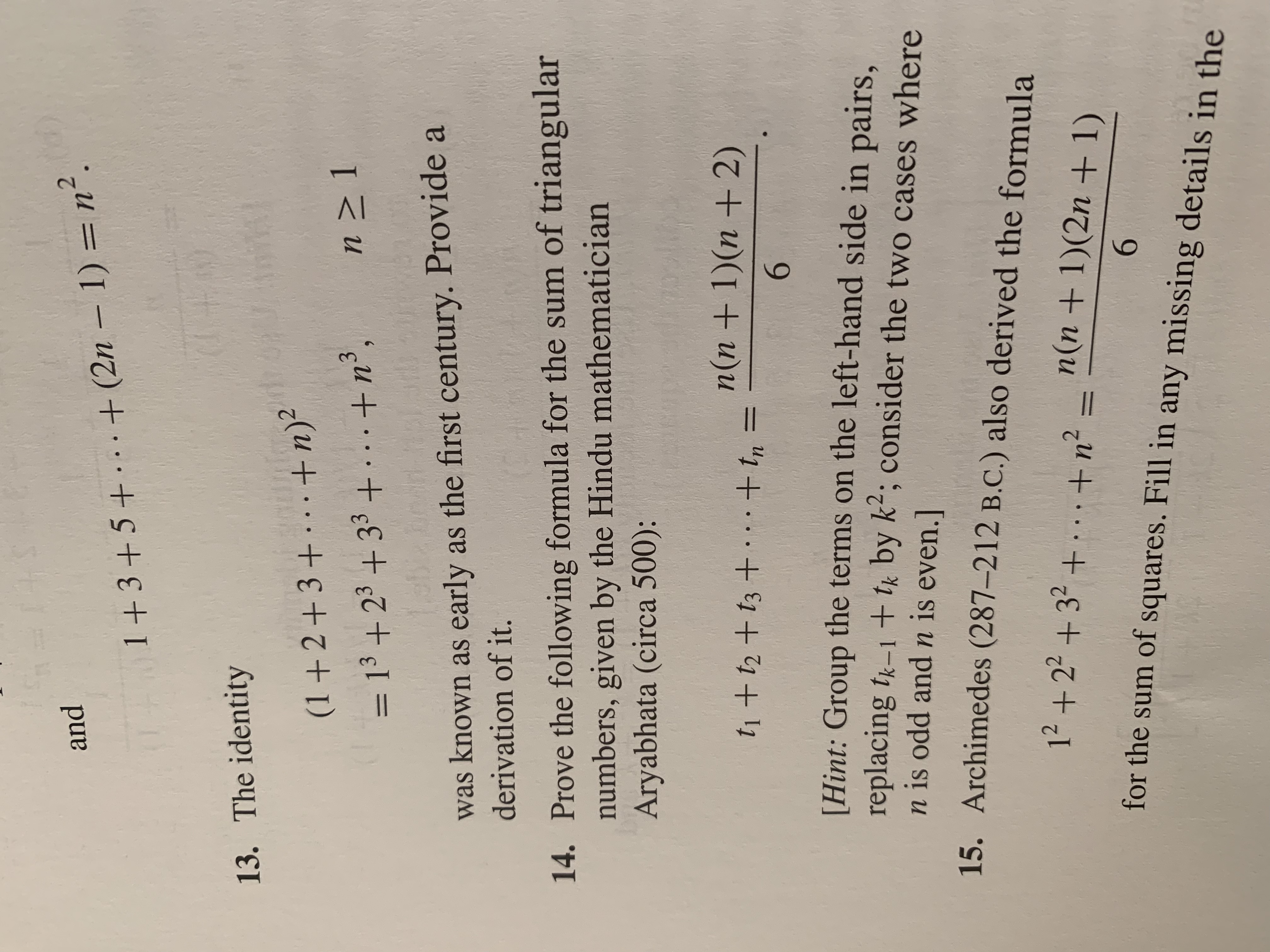


Answered And N 2n 1 N 1 3 5 13 The Bartleby



Mathematical Induction Sum Of Series 1 5 9 13 4n 3 N 2n 1 Youtube
In Exercises 115 use mathematical induction to establish the formula for n 1 1 12 22 32 n2 = n(n 1)(2n 1) 6 Proof For n = 1, the statement reduces to 12 = 1 2 3 6 and is obviously true Assuming the statement is true for n = k 12 22 32 k2 = k(k 1)(2k 1) 6;My attempt is to deduce a formula for simplifying $\frac{n}{(1)(3)(5)(7)(2n1)}$ by lookin Stack Exchange Network Stack Exchange network consists of 176 Q&A communities including Stack Overflow , the largest, most trusted online community for developers to learn, share their knowledge, and build their careersF) Explain why these steps show that this formula is true for all positive integers n a) P(1) is the statement 13 = ((1(1 1)=2)2 b) This is true because both sides of the equation evaluate to 1 c) The induction hypothesis is the statement P(k) for some positive integer k, that is, the statement 1323 k3 = (k(k1)=2)2



Given Z Cos Left Frac 2 Pi 2 N 1 Right I Sin Left Frac 2 Pi 2 N 1 Right Where N Is A Positive Integer Find The Equation Whose Roots Are Alpha Z Z 3 Z 5 Ldots Z 2 N 1 And Beta Z 2 Z 4 Ldots Z 2 N Begin Array Ll Text



Solved 2 Find A Formula For Rn S 21 1 1 3 5 Chegg Com
Get a free home demo of LearnNext Available for CBSE, ICSE and State Board syllabus Call our LearnNext Expert on 1800 419 1234 (tollfree) OR submit details below for a call backShow that 135(2n1) = n2, where n is a positive integer Proof by induction First define P(n) P(n) is 135(2n1) = n2 Basis step (Show P(1) is true) 21 = 12 Use mathematical induction to prove the formula for the sum of a finite number of terms of a geometric progression 2 ark = aarar arn= (arn1 a) / (r1) when r 1Find a formula for 1 3 5 · · · (2n − 1), for , and prove that your formula is correct Details Purchase An Answer Below flash243 Answer Answer Price 050 Added 16 February 15, 0344 Words 133 words Buyers 2 people have bought this answer



1 13 1 25 1 N 2n 1 Mathematics Topperlearning Com 1zm9zzrr


What Is The Sum Of The Series 1 1 3 5 1 3 5 7 1 5 7 9 Up To N Terms Quora
Method 1 The series is in AP a=1,d=2and n=50 and last term l=99 Formula Sum of series = n/2∗(al) = 50/2∗(199) =25∗100 =2500 Answer Method second (short trick)Homework Statement Find a formula for \sum (2i1) =135(2n1) Homework Equations The Attempt at a SolutionIn Exercises 115 use mathematical induction to establish the formula for n 1 1 12 22 32 n2 = n(n 1)(2n 1) 6 Proof For n = 1, the statement reduces to 12 = 1 2 3 6 and is obviously true Assuming the statement is true for n = k 12 22 32 k2 = k(k 1)(2k 1) 6;
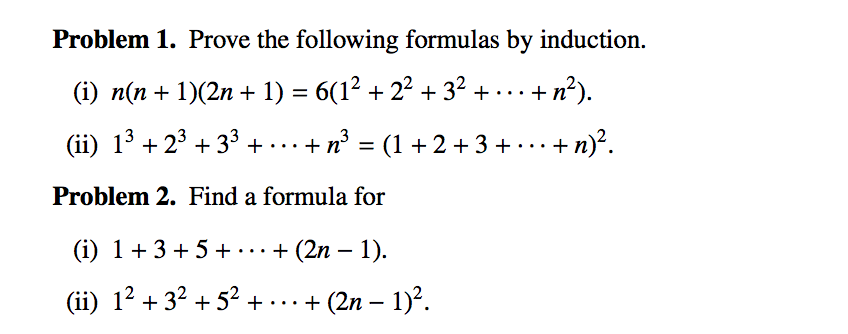


Solved Prove The Following Formulas By Induction I N N Chegg Com



243 N 5 3 2n 1 9 N 3 N 1 Can Someone Solve This Equation And Show Me How Brainly In
Given arthimetic series 135 (2n1) First term a1 = 1 Here we find the sum of first two terms Sum of terms Sn = n/2 (al)Formula to find the n ' term of an AP ie, a n = a (n—1) d where a—> first term, d—> common difference, n —> no of terms For odd natural numbers 1,3,5,, term is a n =1 (n— 1) 2 = (2n— 1) Area of squares Materials Required Squared papers, sketch pens, pencil, a pair of scissors, geometry box, fevicol, white drawing sheets= (), where Γ denotes the gamma function However, the gamma function, unlike the factorial, is more broadly defined for all complex numbers other than nonpositive integers;



Sum Of The First N Odd Numbers Is N 2 Mathematics Stack Exchange



Example 6 Show That Middle Term In Expansion Of 1 X 2n Is
The numbers that have 1, 3, 5, 7, and 9 at the end are odd numbers We are providing you with the explanation of the sum of odd numbers using Arithmetic Progression However, this case can be defined as general for first n odd numbers or the sum of odd natural numbers to 10 or 100(For example 1, 4, 9, 16, 25 and 36 are all perfect squares) Prove by induction that the sum 1 3 5 7 2n1 (ie the sum of the first n odd integers) is always a perfect square 3 Show that any 2 n x 2 n board with one square deleted can be covered by TriominoesShow that 135(2n1) = n2, where n is a positive integer Proof by induction First define P(n) P(n) is 135(2n1) = n2 Basis step (Show P(1) is true) 21 = 12 Use mathematical induction to prove the formula for the sum of a finite number of terms of a geometric progression 2 ark = aarar arn= (arn1 a) / (r1) when r 1
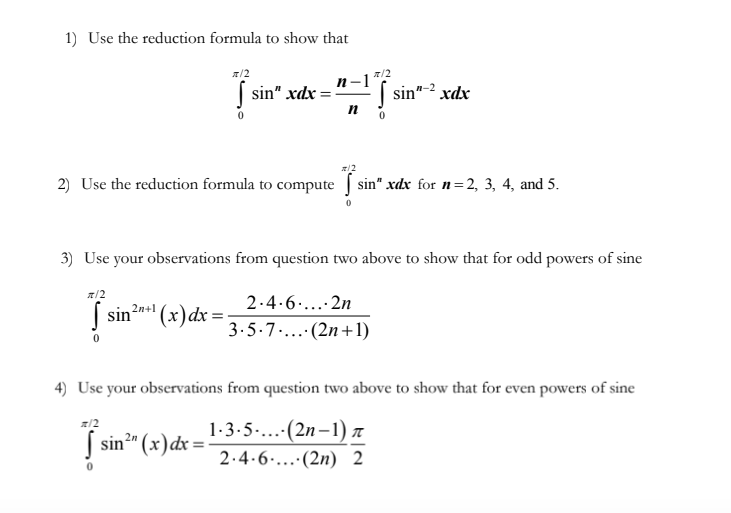


1234n Formula



Lim N Oo 1 2n 1 1 2n 2 1 2n N I N 1 3 B I N
(1) we will prove that the statement must be true for n = k 1135 = 9, 1357 = 16, = 25 This seems to indicate that j=1 (2j −1) = n2 We will now use induction to prove this result Step a) (the check) we have already seen the initial step of the proof, ie, for n = 1, P 1 j=1 (2j −1) = 1 = 1 2 X135 = 9 = 3^2 1357 = 16 = 4^2 etc So the sum up through (2n1) should be n^2 In mathematics though, we shouldn't just jump to conclusions when we see a pattern in a few examples We need to prove that it's true There are a couple of different ways of proving this



The Value Of I 1 3 5 2n 1 Is


Solution Use Mathematical Induction To Prove 4 N 1 5 2n 1 Is Divisible By 21
Get an answer for 'How do I calculate `lim 1*3*5*7*(2n1)/ 2*4*6*8*(2n)` `ngtoo`' and find homework help for other Math questions at eNotes/ 2 * 4 * 6 * * (2n)^2 = (2n)!Show that 2 2n1 is divisible by 3 using the principles of mathematical induction To prove 2 2n1 is divisible by 3 Assume that the given statement be P(k) Thus, the statement can be written as P(k) = 2 2n1 is divisible by 3, for every natural number Step 1 In step 1, assume n= 1, so that the given statement can be written as



Principle Of Mathematical Induction Class Xi Exercise 4 1 Part 1 Breath Math



Download Forula And 1 1 Mp3 Free And Mp4
Rewrite this as 1 * 3 * 5 ** (2n1)/2 * 4 * 6 ** (2n) = (2n)!Sn = 1 3 5 7 (2n1) = n2 First, we must show that the formula works for n = 1 1 For n = 1 S1 = 1 = 12 The second part of mathematical induction has two stepsThe next term of the sequence, ie the (n1)th term 1, 3, 5, , (2n1) which is summed is (2n1), now with n=1 the relationship, 1 3 5 (2n1) = n^2 (1) holds obviously since both sides are 1 Now say (1) holds for n = k for some positive integer k, then, 1 3 5 (2k1) = k^2 add the next term (2k1) to both sides, then;



By Mathematical Induction Prove That 1 2 3 N N N 1 2n 1 6 Brainly In
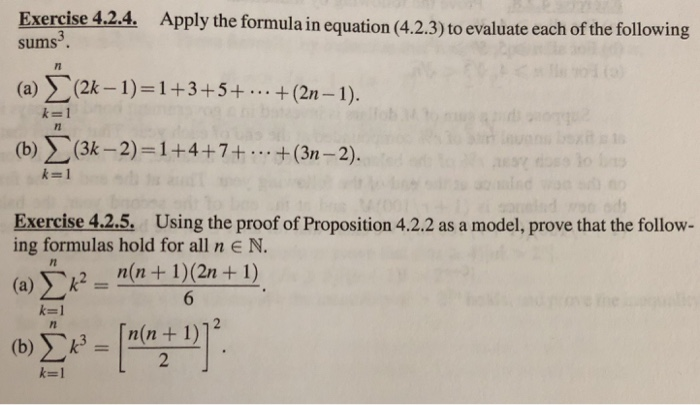


Solved Exercise 4 2 4 Sums Apply The Formula In Equation Chegg Com
159(4n3) = n(2n1) Note The last term is (4n3) It is only necessary to show the formula works for n=1 before showing that if it works for n = k it works for n = k1 but I will show it works for 1, 2 and 3View Notes hw1 from MATH 315 at University of Oregon Homework #1 14 (a) Guess a formula for 1 3 5 (2n 1) by evaluating the sum for n = 1, 2, 3, and 4 (b) Prove your formula using(1) we will prove that the statement must be true for n = k 1
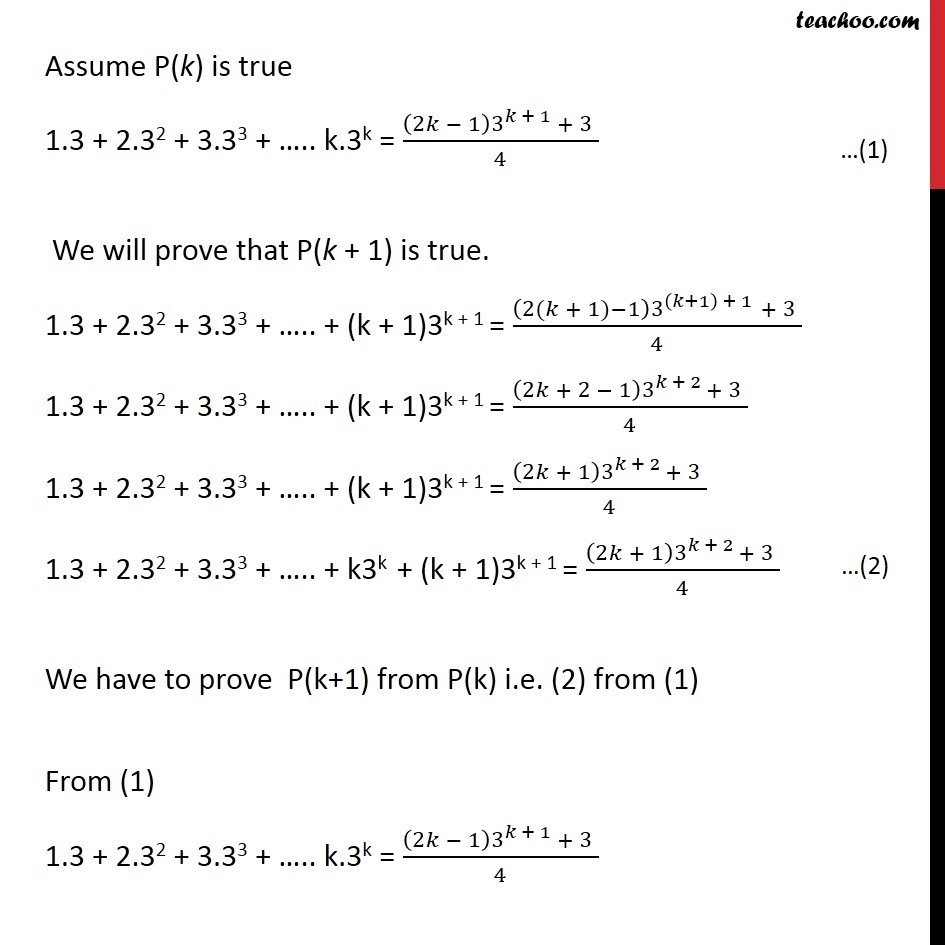


Ex 4 1 5 Prove 1 3 2 32 3 33 N 3n 2n 1 3n 1



2n 1 Q 14 1 3 3 5 5 7 2n 1 2n 1 Solve The System
Answer to Problem 81 Guess at a formula for 135(2n1), and prove your result by for n > 1 Problem Use induction toStirling's formula for the gamma function For all positive integers, !You can put this solution on YOUR website!



Principle Of Mathematical Induction Introduction Videos And Examples



Solved Prove The Formula By Mathematical Induction 1 3 Chegg Com
135 = 9 = 3^2 1357 = 16 = 4^2 etc So the sum up through (2n1) should be n^2 In mathematics though, we shouldn't just jump to conclusions when we see a pattern in a few examples We need to prove that it's true There are a couple of different ways of proving this(2n1) = 3 5 7 9 = 24 And we can use other letters, here we use i and sum up i × (i1), going from 1 to 3 3



How To 12 Proof By Induction 1 3 2 3 3 3 N 3 N N 1 2 2 N 2 N 1 2 4 Prove Mathgotserved Youtube



Solved Find A Formula For The General Term An Of The Sequ Chegg Com



Show That 2ncn 2 N 1 3 5 2n 1 N Brainly In



Find N If 2n 1 P N 1 2n 1pn 3 5 Brainly In



How To Show That The Sequence An 1 3 5 2n 1 N Either Converges Or Diverges Quora



2 Mathematical Induction 2 2 2 2 3 2 N 2 2 N 1 Proof 5 N 2 N Div By 3 Discrete Mathgotserved Youtube
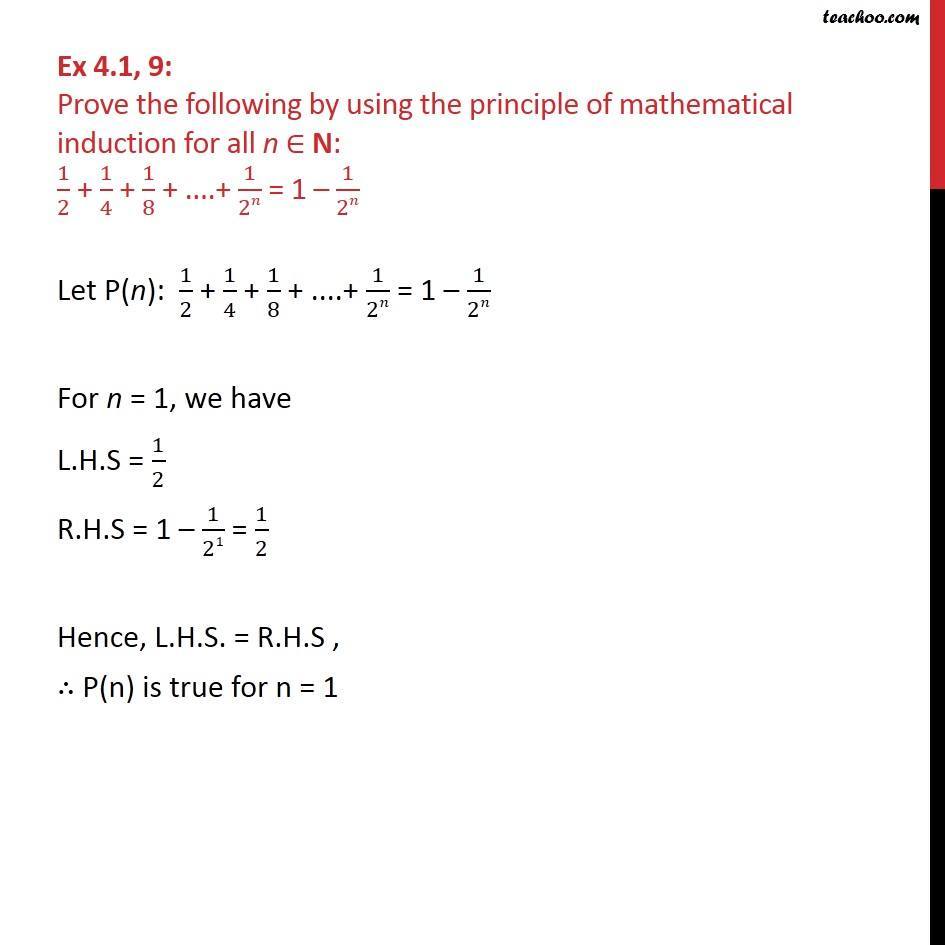


Ex 4 1 9 Prove 1 2 1 4 1 8 1 2n 1 1 2n



Prove That 2n N 1 3 5 2n 1 2 Ndot
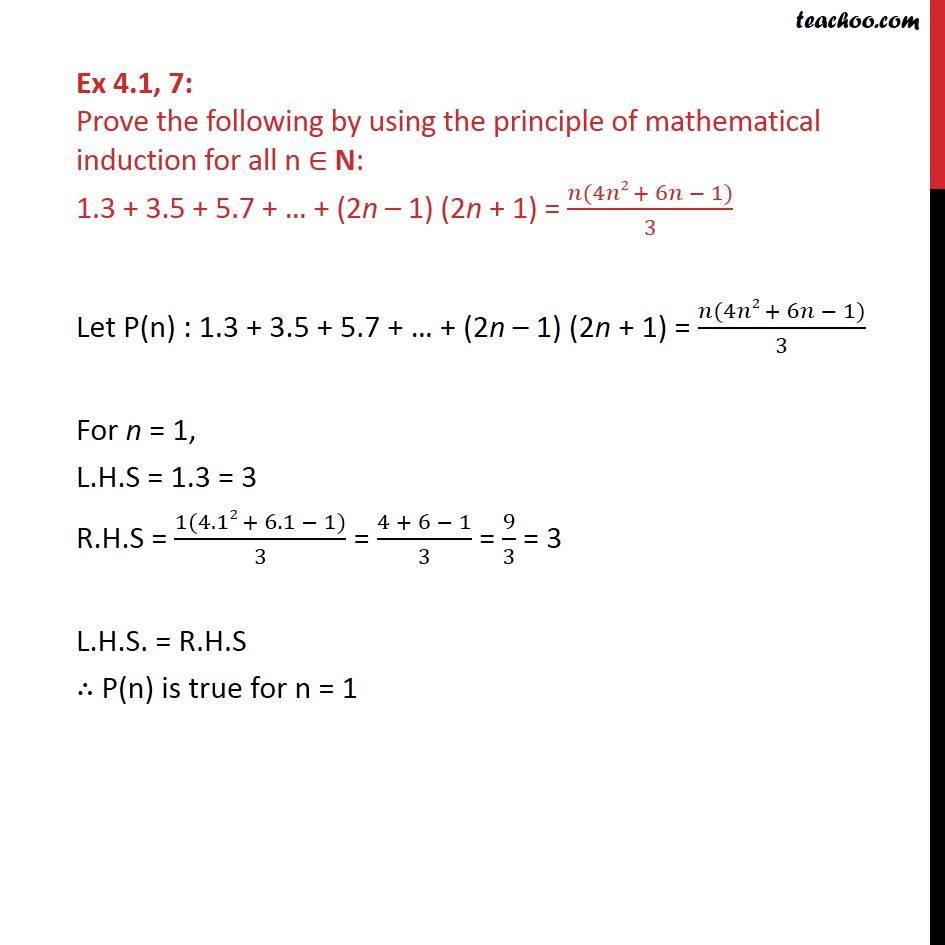


Ex 4 1 7 Prove 1 3 3 5 5 7 2n 1 2n 1 Class 11



Example 6 Show That Middle Term In Expansion Of 1 X 2n Is



Sum Of N N Or N Brilliant Math Science Wiki



If 7 Theta 2n 1 Pi When N 0 1 2 3 4 5 6 Then On The Basis Of Given Information Answer The Given Question The Equation Whose Roots Are Cos Pi7 Cos 3pi7 Cos 5pi7 Is
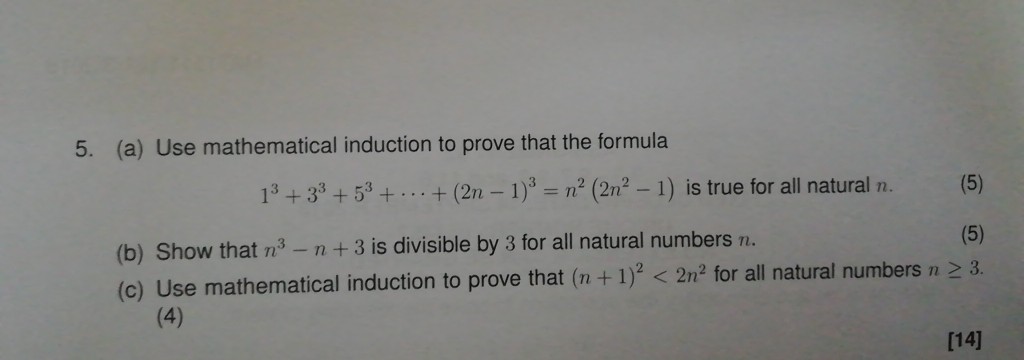


Solved 5 A Use Mathematical Induction To Prove That Th Chegg Com



Principle Of Mathematical Induction Class Xi Exercise 4 1 Part 1 Breath Math
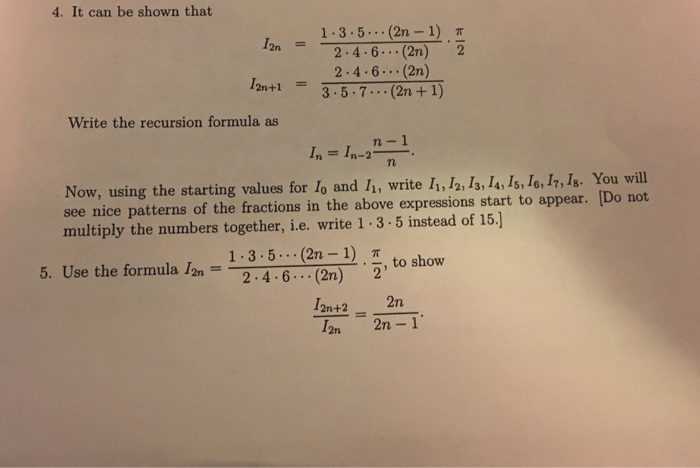


Solved It Can Be Shown That I 2n 1 3 5 2n 1 2 4 6 Chegg Com



Preliminary To Math Induction An Infinite Sequence Of Propositions



Ex 4 1 7 Prove 1 3 3 5 5 7 2n 1 2n 1 Class 11


What Is The Sum Of The Series 1 1 3 5 1 3 5 7 1 5 7 9 Up To N Terms Quora
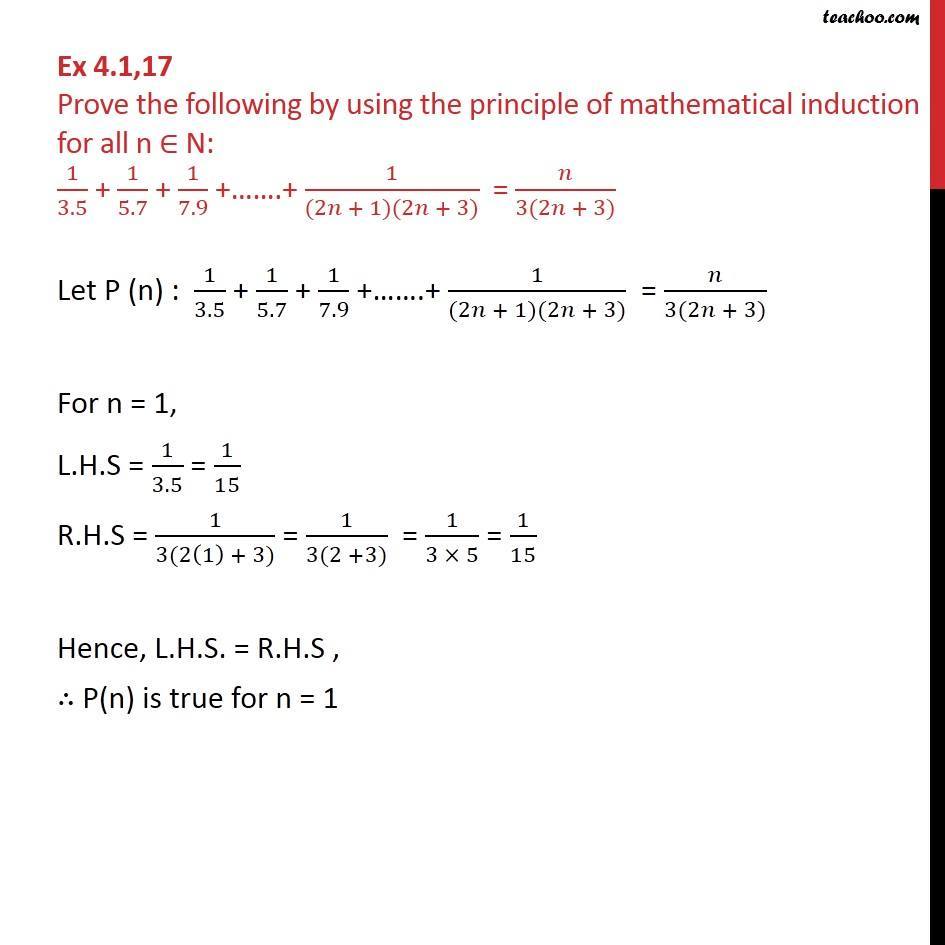


Ex 4 1 17 Prove 1 3 5 1 5 7 1 7 9 1 2n 1 2n 3
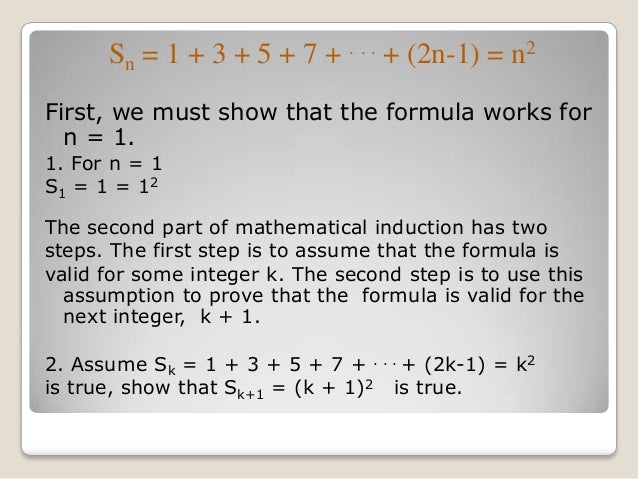


Mathematical Induction



Convergent Divergent Geometric Series With Manipulation Video Khan Academy


What Is The Sum Of 1 3 5 7 9 11 13 15 17 19 21 23 25 27 29 31 95 97 99 Quora


Metod Matematicheskoj Indukcii
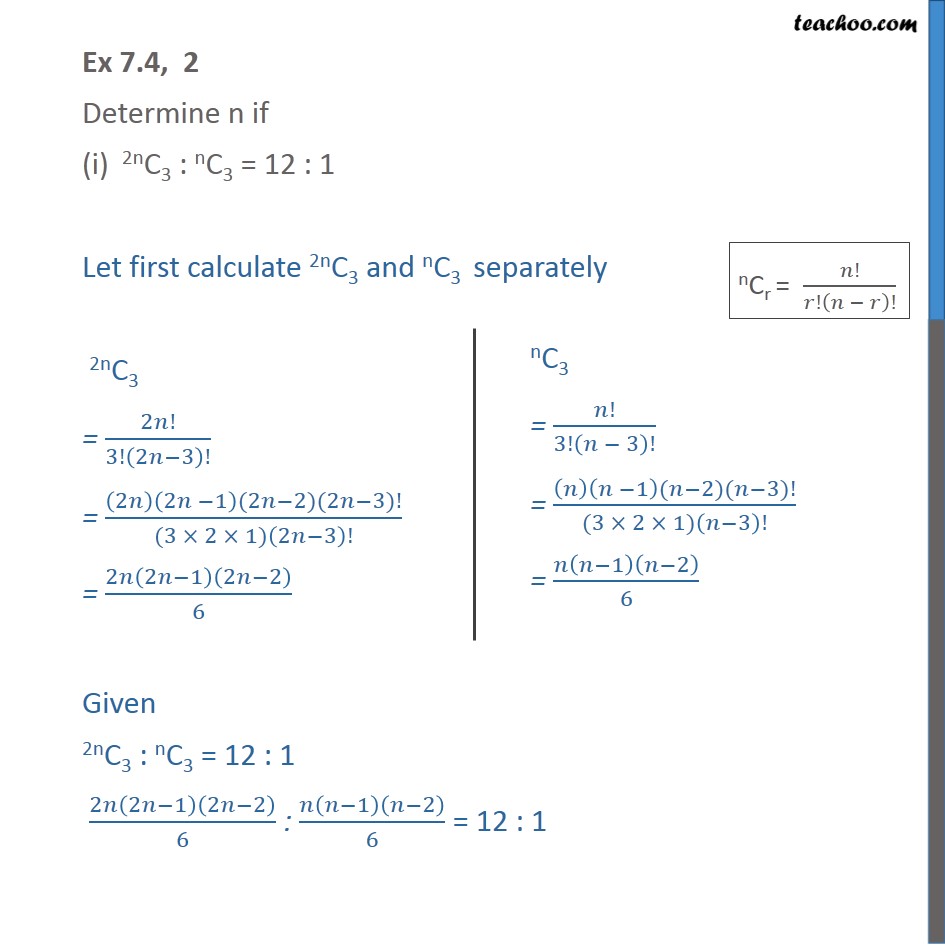


Ex 7 4 2 Determine N If I 2nc3 Nc3 12 1 Chapter 7
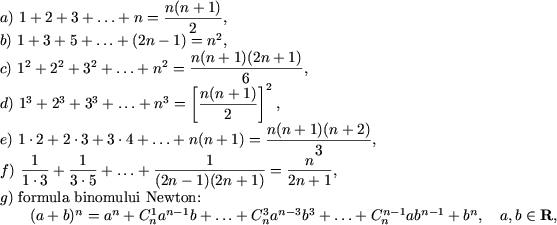


n2 Formula
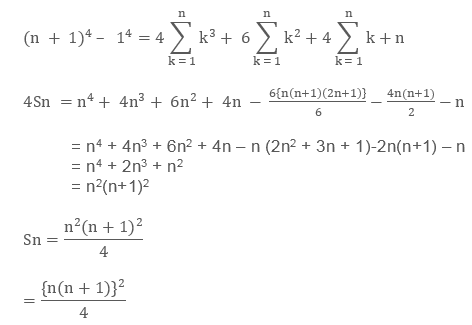


Sum To N Terms Of Special Series Study Material For Iit Jee Askiitians



n2 Formula Proof



Infinite Series Sum 1 N 1 N 1 3 5 2n 1 Convergence Using The Ratio Test Youtube



3 16 161 And Now For Sequences 3 16 162 Sequences Sequences Represent Ordered Lists Of Elements A Sequence Is Defined As A Function From A Subset Ppt Download
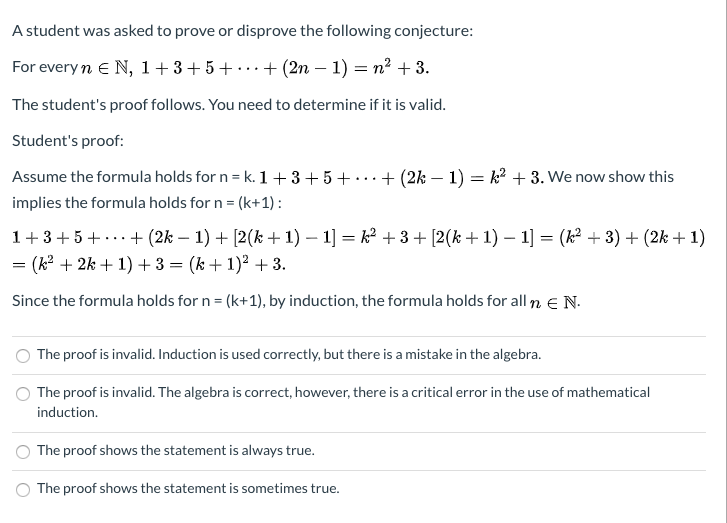


Answered For Every N E N 1 3 5 2n 1 Bartleby



Find N 7 2n 1 49 7 3 Brainly In



Sum Of First N Odd Natural Numbers 1 3 5 2n 1 Summation Of First N Odd Numbers Youtube
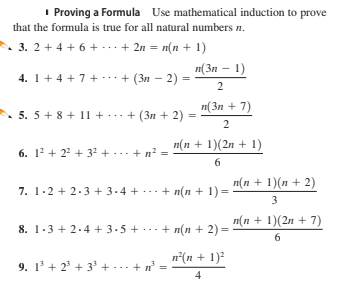


Answered I Proving A Formula Use Mathematical Bartleby
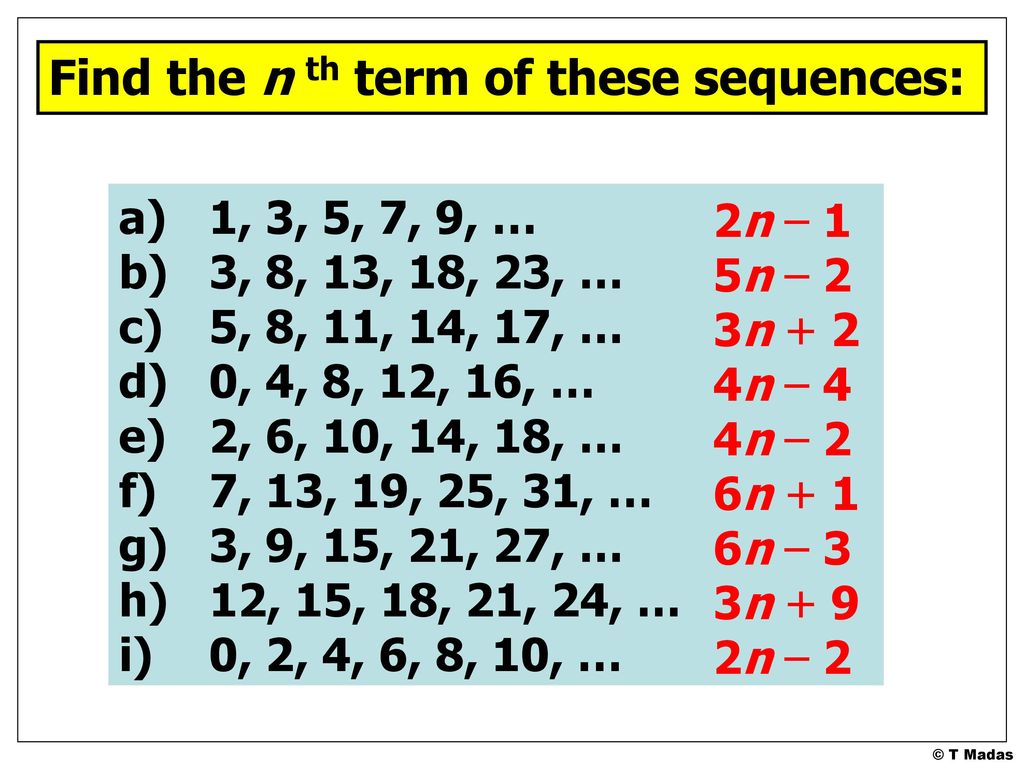


Finding The N Th Term Generating Formula Ppt Download
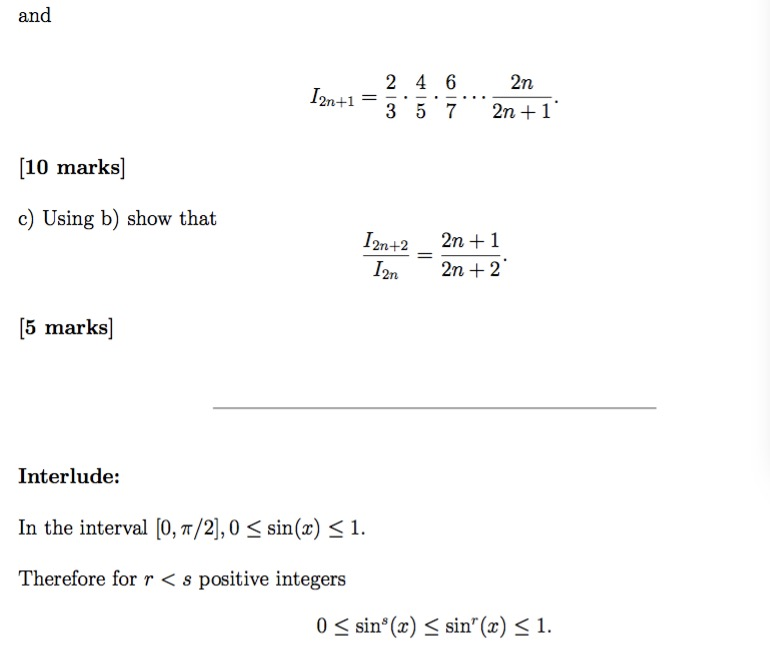


Solved B Let T 2 N R Da Sin Use The Reduction Formula T Chegg Com



Pin By Sanjay Sahu Bandla On Education Math Methods Learning Mathematics Math Formulas
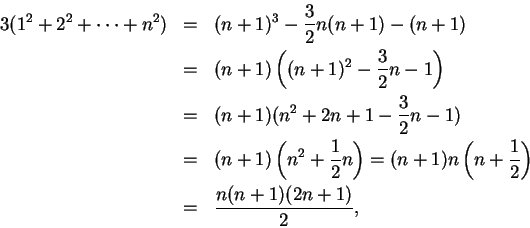


n2 Formula



n2 Formula


General Formulas Of A Sequence
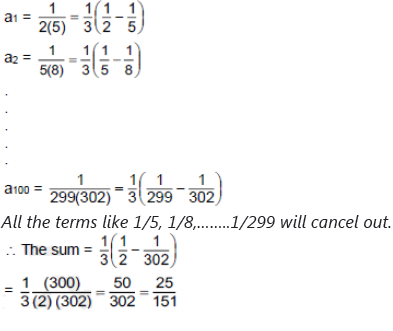


Tips And Tricks To Solve Sequences And Series Questions Advanced



Prove That 2n N 1 3 5 2n 1 2 Ndot
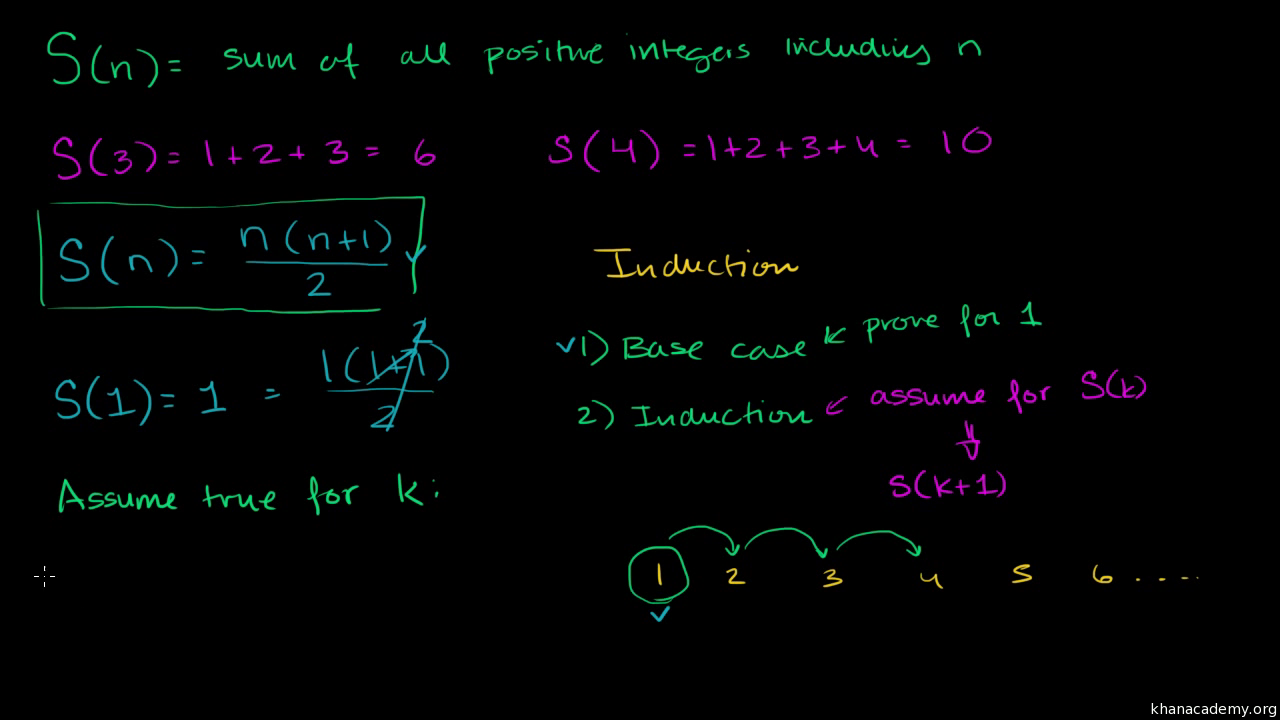


Proof Of Finite Arithmetic Series Formula By Induction Video Khan Academy
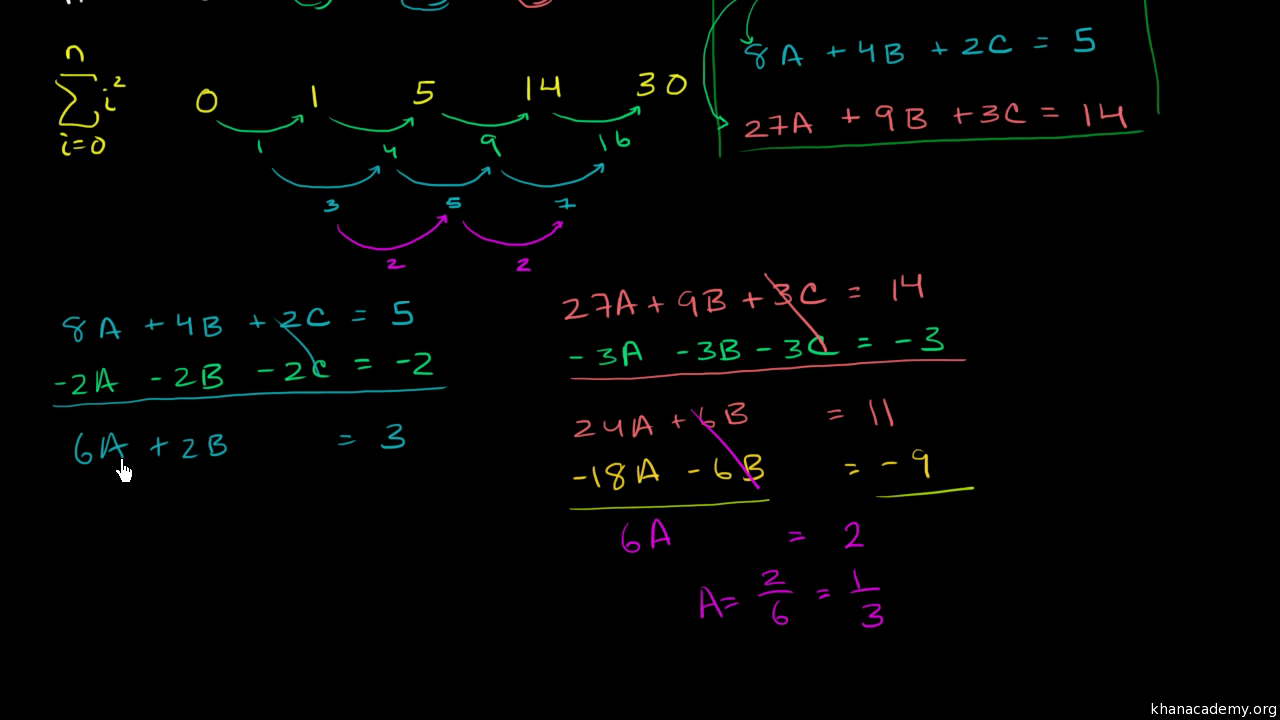


Sum Of N Squares Part 2 Video Khan Academy
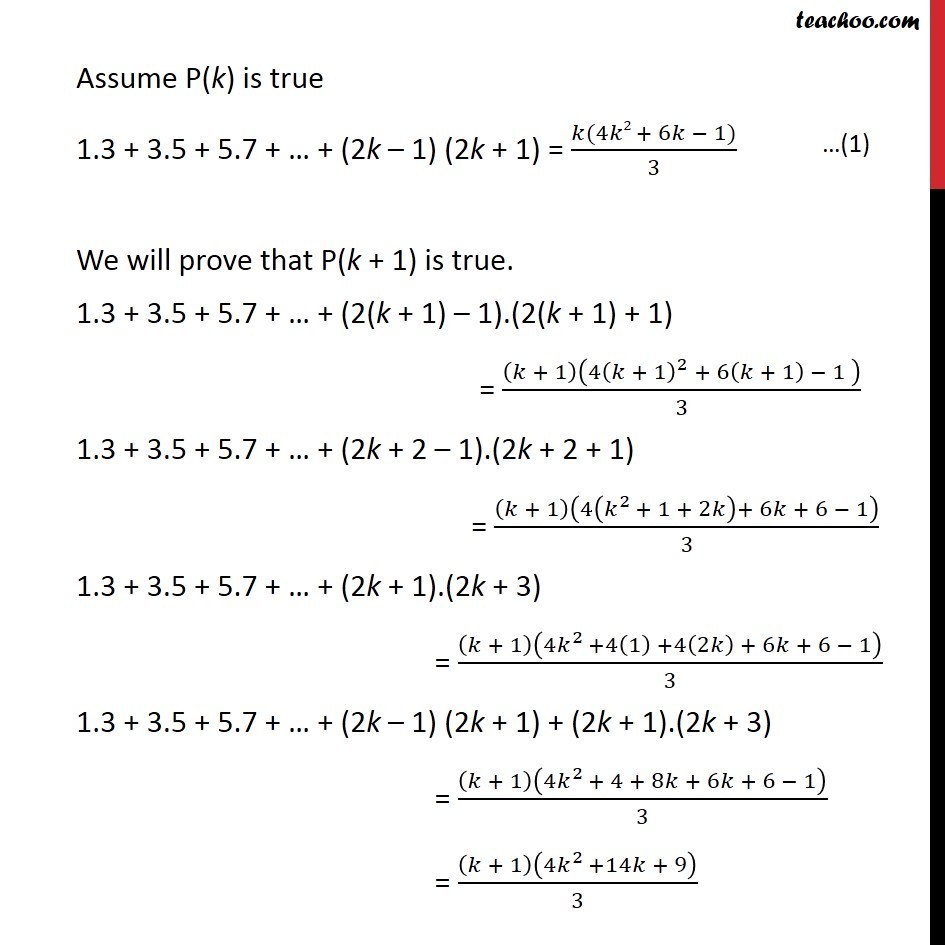


Ex 4 1 7 Prove 1 3 3 5 5 7 2n 1 2n 1 Class 11


What Is The Value Of 1 2 2 2 3 2 N 2 Quora



Approximations Of P Wikipedia



n2 Formula
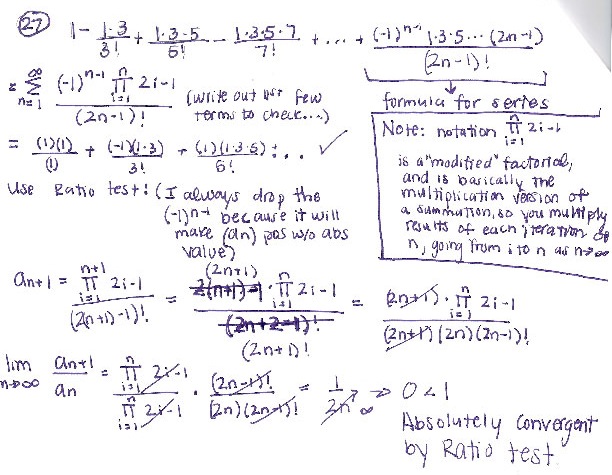


Determine Whether The Series Is Absolutely Convergent Conditionally Convergent Or Divergent 1 1 3 3 1 3 5 5 1 3 5 7 7 1 N 1 1 3 5 2n 1 2n 1 Homework Help And Answers Slader
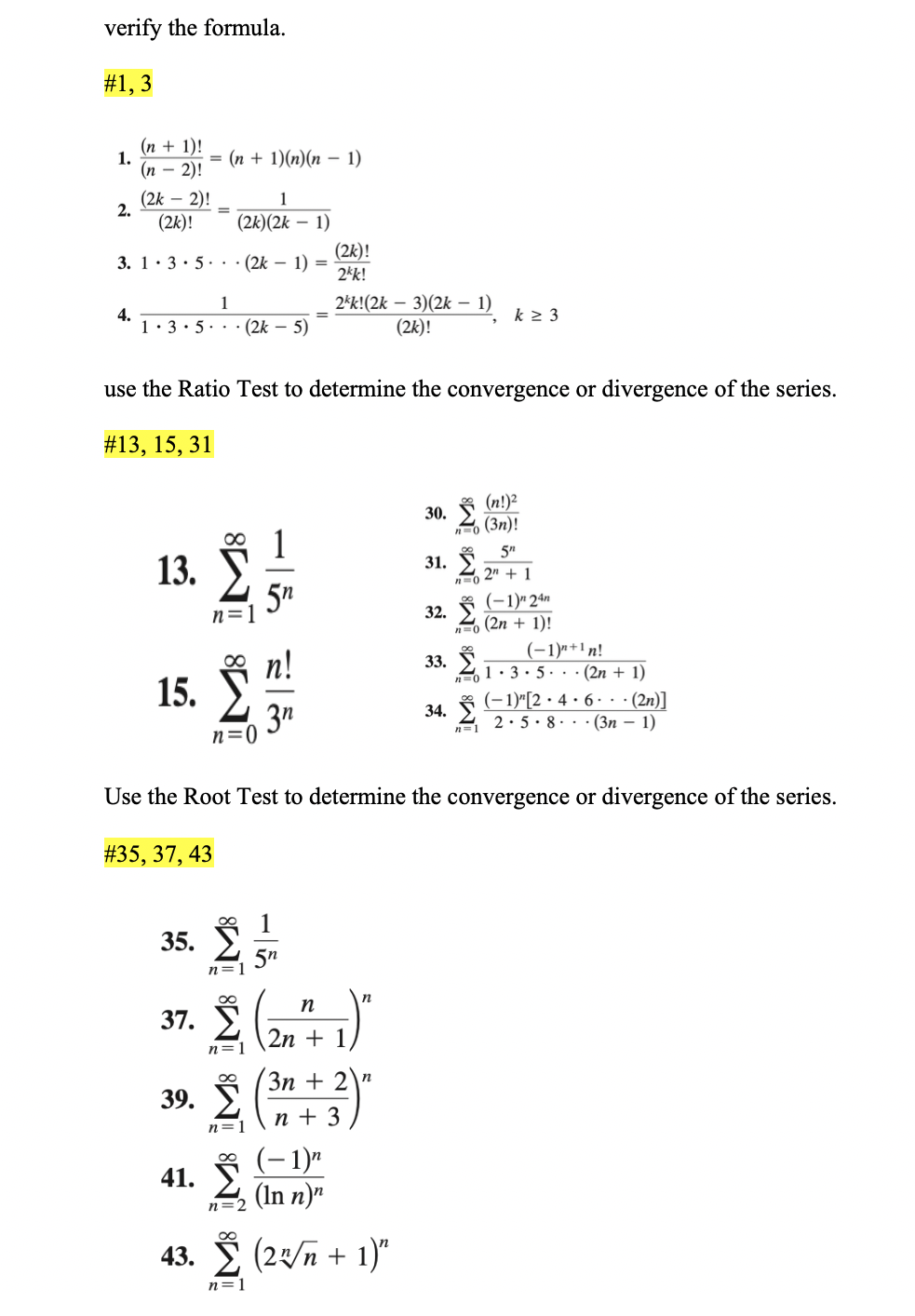


Solved Verify The Formula 1 3 N 1 1 N 1 N Chegg Com


What Is The Sum Of 1 3 5 7 9 11 13 15 17 19 21 23 25 27 29 31 95 97 99 Quora


What Is The Summation Of The Series 1 3 6 10 15 Quora



Sum Of Squares Of Odd Numbers 1 2 3 2 5 2 2n 1 2 Derivation Formula Prmo Rmo Iit Youtube


How To Find The Sum Of The Series Math Frac 1 1 3 Frac 2 1 3 5 Frac 3 1 3 5 7 Frac 4 1 3 5 7 9 Math Quora



Sum Of N N Or N Brilliant Math Science Wiki



Let A 1 3 5 7 B X X 2n 1 N Belongs To N And C X X 4n 1 N Belongs To N Prove That 1 A B 2 C Not Equal To B Mathematics Topperlearning Com Soz5mguu


What Is The Sum Of The Series 1 1 3 5 1 3 5 7 1 5 7 9 Up To N Terms Quora



Find The Sum Of Series Upto N Terms 2n 1 2n 1 3 2n 1 2n 1 2 5 2n 1 2n 1 3 Youtube



What Is The Sum Of Terms Of This Series 1 3 5 7 9 Quora
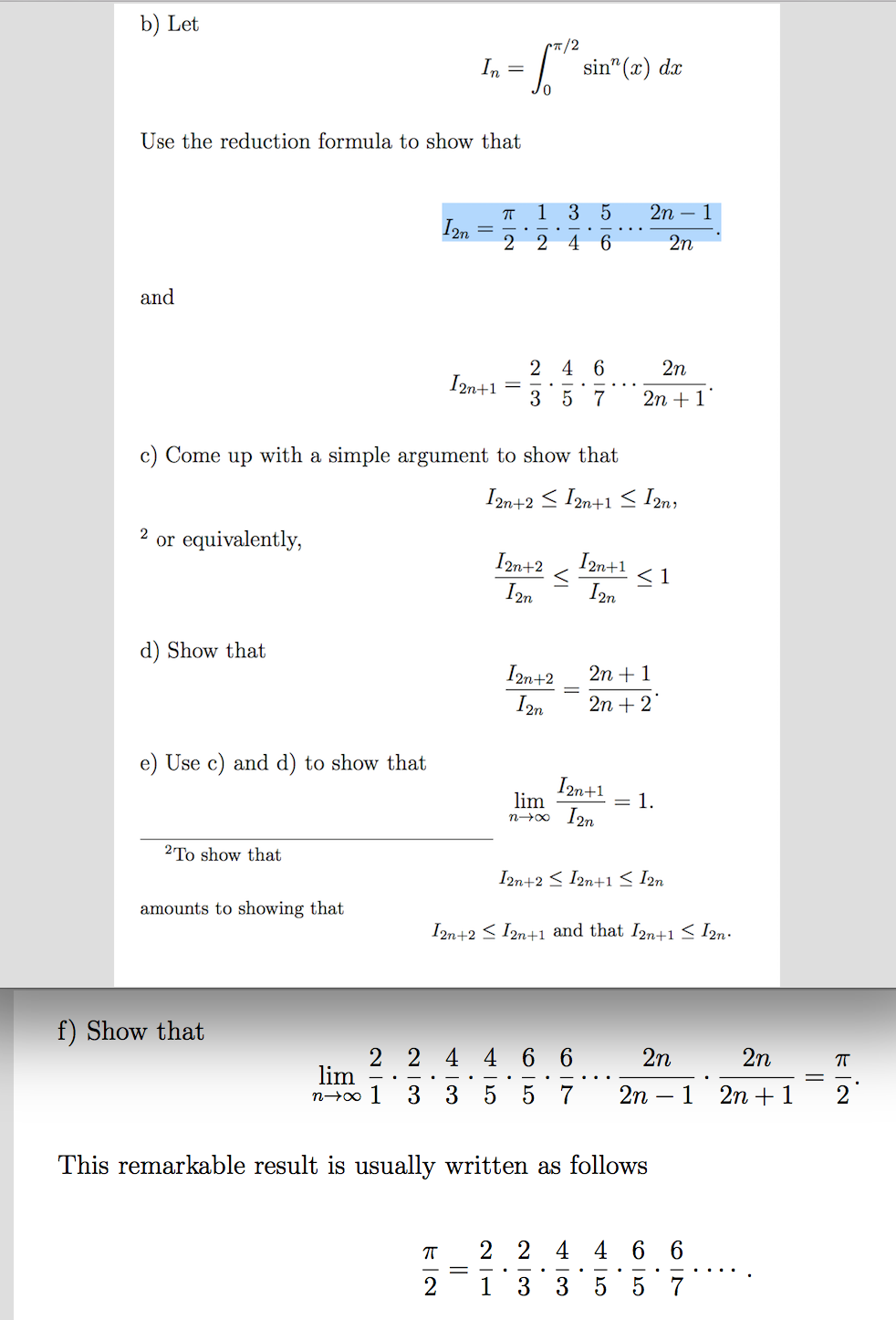


Solved In Sin A Dx Use The Reduction Formula To Sh Chegg Com


How To Prove That Math 1 3 3 3 5 3 2n 1 3 2n 4 N 2 Math Using Mathematical Induction Quora



Please And Thank You Purpose Of This Project Is To Develop Wallis 39 S Formula Forn 0 1 2 Define The 6 Prove That 2e12 12 3 3 5 5 7 7 2n 2n 2n 1 M 2 2 4 4 6 6 2n 2n 2 Parts 5 And 6 Yi Homeworklib
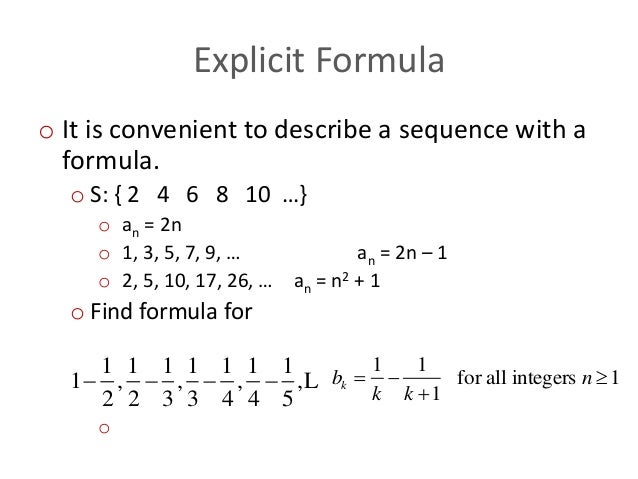


Sequences



Solved Prove The Formula By Mathematical Induction 1 3 Chegg Com



How To Find The General Term Of Sequences Owlcation Education



0 件のコメント:
コメントを投稿